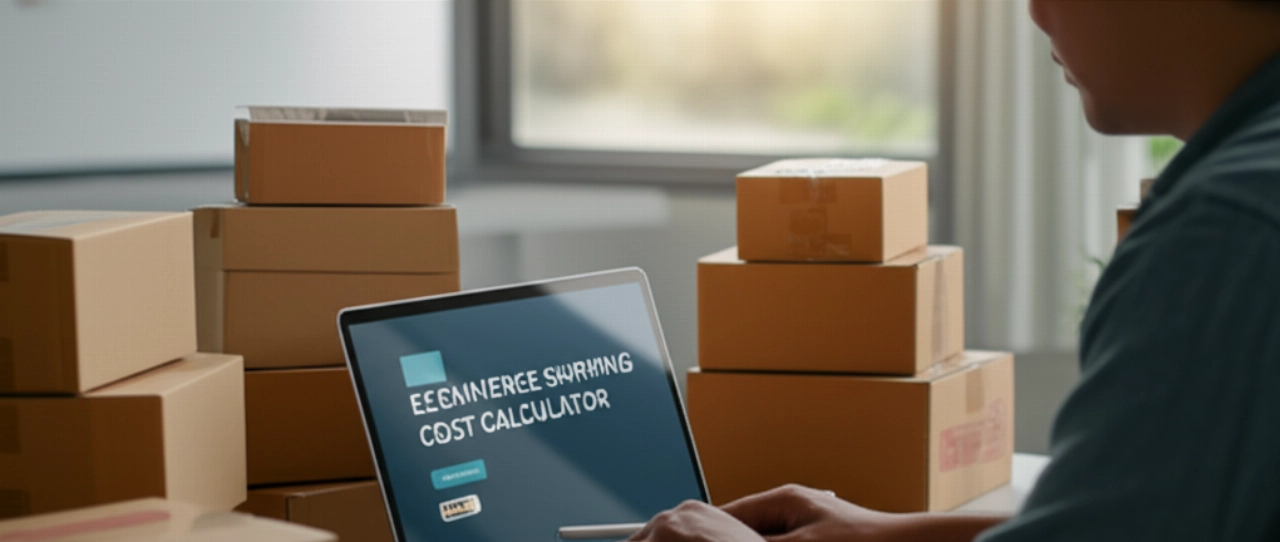Is your e-commerce operation battling the relentless chaos of shipping logistics? Are manual processes, delayed updates, and frustrated customers the hidden costs eroding your profitability?
For many B2B and enterprise companies, the promise of seamless order fulfillment often collapses under the weight of disconnected systems. You're likely grappling with the scalability ceiling of current shipping methods, the integration hell of disparate data sources, and the performance bottleneck that slows down every transaction. Without a robust UPS API integration, your business is leaving money on the table, sacrificing efficiency, and jeopardizing customer trust with every shipment.
This isn't just about connecting to a shipping carrier; it's about engineering a logistics backbone that transforms your supply chain from a cost center into a competitive differentiator. This guide will reveal how strategic UPS API integration can unlock real-time accuracy, optimize shipping costs, and deliver unparalleled customer satisfaction, turning your logistics into a powerful growth engine.

Beyond the Label: How UPS API Integration Becomes Your Strategic Advantage
Imagine a world where every order, from checkout to delivery, is a symphony of precision. This isn't a pipe dream; it's the reality forged by a deep, intelligent UPS API integration.
For enterprise-level operations, this integration extends far beyond simply printing labels. It's about embedding real-time shipping rates directly into your checkout, offering dynamic delivery options, and providing customers with granular, up-to-the-minute real-time tracking information.
This level of transparency and control drastically reduces customer service inquiries, builds immense trust, and frees up your team to focus on higher-value tasks. It's a critical component of supply chain optimization and a direct pathway to enhanced customer experience.
Ultimately, a well-executed UPS API integration isn't just a technical feature; it's a strategic move that enhances your competitive posture, reduces Total Cost of Ownership (TCO) for logistics, and directly impacts your bottom line.

The Hidden Costs of Disconnected Shipping: Avoiding the 'Off-the-Shelf' Trap
Many businesses fall into the trap of 'good enough' shipping solutions. They rely on basic plugins or manual processes, unaware of the compounding operational nightmare these create.
The 'One-Size-Fits-All' Trap of generic shipping modules often means:
- Manual Data Entry: Leading to errors, delays, and wasted labor hours.
- Inaccurate Rates: Resulting in overcharging customers or absorbing unexpected shipping costs.
- Lack of Real-time Visibility: Frustrating customers and increasing 'where is my order?' calls.
- Limited Customization: Inability to handle complex B2B pricing, product configurators, or specific delivery requirements.
These seemingly minor inefficiencies quickly escalate into a significant performance bottleneck, impacting everything from order fulfillment speed to customer satisfaction. A superficial UPS API integration is barely better than none at all; it merely shifts the problem, rather than solving it.
True enterprise-grade shipping logistics demands a tailored approach, one that integrates deeply with your ERP, WMS, and CRM systems, ensuring data integrity and automated workflows.

Blueprint for Success: Key Pillars of an Enterprise UPS API Integration
Achieving logistics mastery through UPS API integration requires a strategic blueprint, not just a technical checklist. Here are the critical pillars:
- 1. Comprehensive Rate Calculation & Display: Integrate UPS's full suite of services (Ground, Air, Freight) with real-time rate shopping at checkout, considering dimensions, weight, origin, and destination. This is crucial for shipping cost optimization.
- 2. Automated Label Generation & Manifesting: Streamline your packing and shipping process by generating compliant labels and manifests directly from your e-commerce or ERP system, reducing manual errors and accelerating dispatch.
- 3. Real-time Tracking & Notifications: Provide customers and internal teams with proactive updates on shipment status, from pickup to delivery. This enhances customer experience and reduces support load.
- 4. Seamless Integration with ERP & WMS: Your UPS API integration must talk fluently with your Enterprise Resource Planning (ERP) and Warehouse Management Systems (WMS) for accurate inventory, order processing, and fulfillment. This is key to avoiding integration hell.
- 5. Error Handling & Resilience: Implement robust error logging, fallback mechanisms, and reconciliation processes to ensure shipping operations remain smooth even during API outages or data discrepancies. This builds a truly future-proof system.
- 6. Returns Management: Don't overlook the reverse logistics. Integrate UPS returns capabilities to simplify the process for both your customers and your operations.
Case Study: Streamlining Logistics for a Global B2B Distributor
A multi-national B2B distributor, processing thousands of complex orders daily, faced significant challenges with their fragmented shipping operations. Their existing system relied on manual data entry into the UPS WorldShip software, leading to frequent errors, delayed shipments, and an inability to provide real-time tracking to their enterprise clients.
Commerce-K engineered a comprehensive UPS API integration directly into their custom e-commerce platform and ERP system. This involved:
- Automating real-time rate calculation at checkout, including complex freight rules.
- Implementing automated label generation and manifest submission.
- Developing a custom dashboard for internal teams to monitor all shipments and exceptions.
- Integrating real-time tracking data directly into the customer's order history portal.
The Result: A 30% reduction in shipping-related customer service inquiries, a 25% increase in order fulfillment speed, and a significant improvement in overall customer satisfaction due to enhanced transparency. The client transformed their delivery management from a bottleneck into a competitive advantage.
The Commerce-K Difference: Your Partner in Logistics Transformation
The complexities of enterprise UPS API integration demand more than just a developer; they require a strategic partner who understands the intricate dance between technology, logistics, and business outcomes.
At Commerce-K, we don't just write code. We analyze your entire supply chain optimization needs, identify critical integration points, and architect a solution that is not only technically sound but also strategically aligned with your growth objectives.
We specialize in building API-first architecture that ensures your UPS API integration is flexible, scalable, and truly future-proof, capable of evolving with your business needs and integrating seamlessly with other critical systems like PIM and CRM.
Our approach mitigates the fear of a failed migration or integration by focusing on meticulous planning, rigorous testing, and a deep understanding of enterprise-level complexity. We turn potential integration hell into a pathway to operational excellence.
Frequently Asked Questions about UPS API Integration
- Q: What specific UPS APIs are most critical for an enterprise e-commerce business?
A: For enterprise e-commerce, the most critical UPS APIs typically include the Rating API (for real-time shipping costs), Shipping API (for label generation and manifesting), Tracking API (for real-time shipment visibility), and Address Validation API (to reduce delivery errors). Freight APIs are also essential for B2B operations. - Q: How long does a typical enterprise-level UPS API integration take?
A: The timeline varies significantly based on the complexity of your existing systems (ERP, WMS, e-commerce platform), the scope of desired features, and the level of customization. A basic integration might take weeks, while a comprehensive, deeply integrated solution for an enterprise could span several months, including discovery, development, testing, and deployment. - Q: What are the main benefits of integrating the UPS API directly versus using a third-party shipping solution?
A: Direct integration offers unparalleled control, customization, and cost efficiency. It allows for highly specific business logic (e.g., complex pricing rules, custom delivery options), deeper integration with internal systems, and often avoids recurring fees associated with third-party platforms. It also ensures your delivery management is precisely tailored to your unique operational needs. - Q: Can a UPS API integration help reduce shipping costs?
A: Absolutely. By integrating the Rating API, you can implement real-time rate shopping across different UPS services, automatically select the most cost-effective option based on your business rules, and accurately charge customers, minimizing unexpected shipping expenses. It also reduces manual errors that lead to costly re-shipments. - Q: What kind of technical expertise is required for a successful UPS API integration?
A: A successful enterprise UPS API integration requires deep expertise in API development, understanding of complex logistics workflows, knowledge of your specific e-commerce platform and ERP/WMS systems, and robust error handling strategies. It's often beyond the scope of in-house IT teams without specialized e-commerce integration experience.
You've seen how a strategic UPS API integration transcends mere technical connectivity, transforming into a powerful lever for operational efficiency, cost reduction, and superior customer satisfaction. It's the difference between reactive shipping chaos and proactive logistics mastery.
Perhaps you're thinking, 'This sounds complex,' or 'Our current systems are too rigid.' We understand these concerns. The true cost isn't in the investment in a robust solution, but in the ongoing losses from inefficient processes, frustrated customers, and missed growth opportunities. This isn't an 'overkill' solution; it's a foundational element for any enterprise serious about scaling its digital commerce.
Stop letting shipping complexities stifle your growth. Your business deserves a logistics backbone that delivers measurable results and competitive advantage. The first step isn't a quote; it's a no-obligation Logistics & Integration Strategy Session with our senior architects. We'll help you map your current challenges, identify hidden opportunities, and de-risk your investment in a truly transformative UPS API integration. Click here, tell us about your project, and discover how to turn your supply chain into your strongest asset. Start building your future-proof commerce engine today.
Now that you understand the power of integrated logistics, explore how our ERP integration services can unify your entire enterprise data flow.
Discover the benefits of a composable commerce architecture to ensure your e-commerce platform is as flexible as your business needs.





